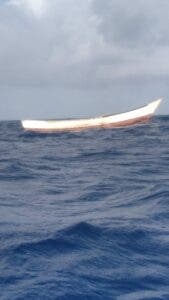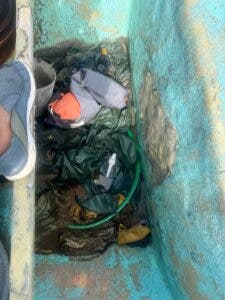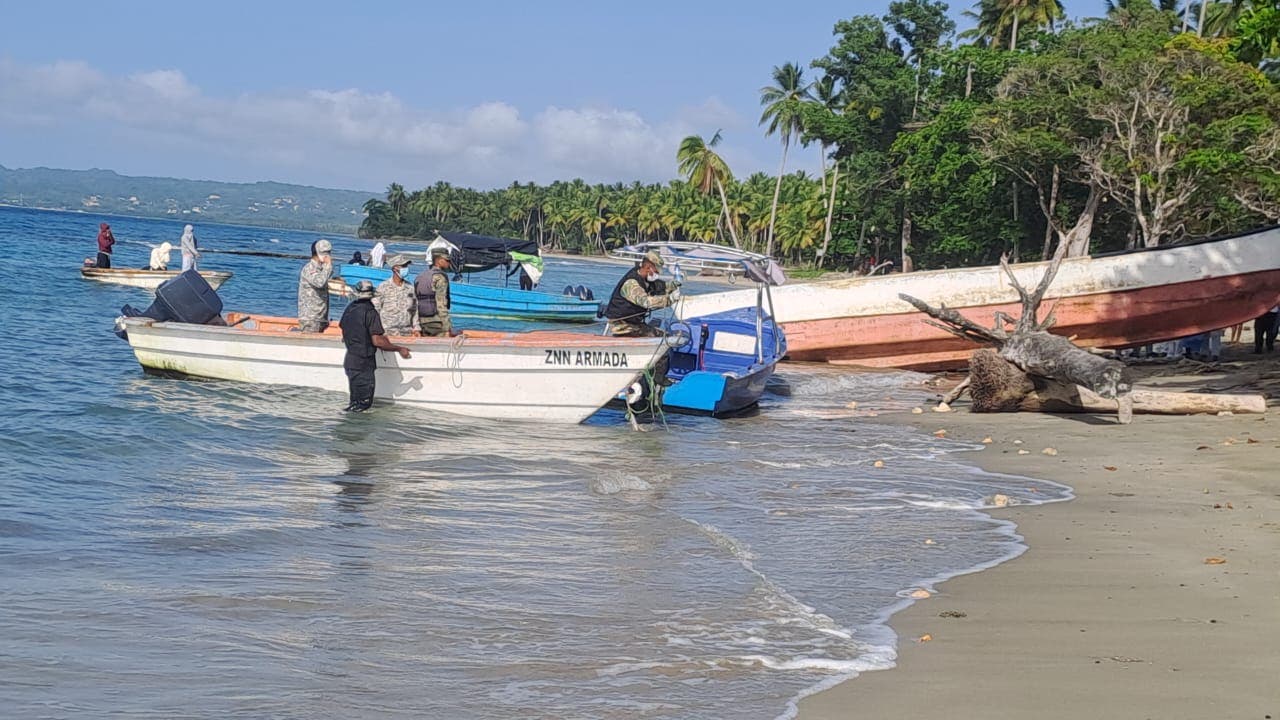SANTO DOMINGO.- The Dominican Republic Navy clarified tonight that 14 skeletons were found in a boat of unknown origin and manufacture that was adrift off the coast of Río San Juan.
He also stated that those travelling on the boat were of Senegalese and Mauritanian origin.
The institution specified that a backpack containing 12 packages of a substance presumably cocaine or heroin was found in the boat, in the presence of the competent authorities.

The seized substance was handed over to members of the National Directorate for Drug Control (DNCD) for the corresponding procedures. The institution reported that it will continue with the investigation of this discovery in collaboration with the Public Prosecutor’s Office to determine the causes and origin of this maritime tragedy of foreign origin.


Some identity documents were found on the boat.
What could have caused the maritime tragedy
An engine failure or a lack of fuel could turn the journey of dozens of migrants who have boarded a boat off the African coast and dream of reaching the Canary Islands into tragedy.
“It is not common, but there have been several that have arrived in the Caribbean. As far as we know, four have arrived in the Caribbean in the last five years,” Helena Maleno, spokesperson for the collective Caminando Fronteras, which has been monitoring migratory routes in the area for more than 20 years, explained to BBC Mundo in an article published in January.
“From 2018 to 2022, 244 vessels have completely disappeared. Most are lost on the Atlantic route“he says, aware of the danger of going out to sea into the Atlantic to avoid coastal patrols.
The island of El Hierro, the westernmost of the Canaries, is the last land that a cayuco will be able to reach. Beyond that island, there are other destinations waiting for them. 4,500 kilometers of only water until seeing land again. Nobody survives a journey like that.
This was the case of a boat that arrived in Tobago in 2021 with fifteen corpses on board, reduced to mere skeletons.


Photos of the documents of some of those who were travelling on the boat.
The boat was registered in Mauritania, in northwest Africa, some 4,800 km away, from where it had left six months earlier, according to investigators.
A boat at the mercy of the currents It can take six, seven or eight months to reach the Caribbean.depending on where the engine would be left.
“The route to the Canary Islands is very long and many of the boats, especially those leaving from Senegal and Gambia, are fishermen’s boats, who know the sea, but not the high seas. They get to know the sea by following the coast like the Phoenicians did,” explains Maleno.
“What happens? When you follow that coastal area, there are many problems because there is a lot of control. There is the coast guard, but there is also the Frontex plane, the civil guard, the area is very militarized. That is why they decide to go a little further into the Atlantic and when they go into the Atlantic they face a huge danger.”
“Many of the boats that disappear is because they have entered that no man’s land. Another thing is whether the wooden boat is strong enough to reach the Caribbean. The strongest ones are the ones that make it, but many disappear because they are swallowed up by the Atlantic,” says the expert.
“In addition, it must be taken into account that There is an area where if you go off course there are no boats“, adds Maleno about the Canary Islands route, which covers a wide region that stretches from Guelmim, in Morocco, to Ziguinchor, in southern Senegal.
What is the Canary current?
The Canary Islands Current is a coastal current of very cold waters of the Atlantic Ocean. It is located between the northwest coast of Africa and the North Atlantic Current.
It crosses the Canary Islands, goes along the African coast and separates and opens up when it reaches Cape Verde. From there the current goes towards the Caribbean and from the Caribbean the Gulf Stream rises, reaches Europe again and makes a return almost again to return to the Canary Islands.
“In the Canary Islands, cold waters from northern Europe, which is the cooled Gulf Stream, and waters from the Mediterranean, which can also cool down due to the effect of the Alps, come together and form the Canary Current, which flows back down to the Canary Islands,” naval engineer Jesús Alarcón Prieto, representative of the School of Naval Engineers at the Polytechnic University of Madrid, explained to BBC Mundo.


“In the Canary Current the prevailing winds are similar, that is, they also go west. Therefore, If a ship, no matter where it comes from, loses its engine, both the current and the wind move it towards America.“That is why canoes have often been found in the Caribbean,” Alonso Hernández Guerra, professor of Physical Oceanography, told BBC Mundo.
“This is the same current and the same wind that Christopher Columbus took to reach America.“, adds the professor at the Institute of Oceanography and Global Change at the University of Las Palmas de Gran Canaria.
This current and the trade winds, which blow regularly from east to west, remain more or less stable throughout the year, except in September and October when there is a period of calm, with practically no wind in the Canary Islands.
The absence of wind is added to the peculiar effect of the Canary Islands countercurrentwhich helps boats sailing near the African coast to reach the islands.
Between Lanzarote and La Palma, the Canary current flows southwards, but between the islands and the African continent it flows northwards. This countercurrent only occurs in September and October, which means that these are the months when there are most migrants arriving on the islands.


Part of the belongings of those traveling on the boat.
From January 1 to October 15, 2023, 23,537 migrants arrived in the Canary Islands by sea, which is 79.4% more than in the same period in 2022.
The political and social crisis in Senegal has led hundreds of Senegalese to take to the sea. More than 9,000 migrants arrived in October last year alone.
In 2022, 1,784 people disappeared or died in their attempt to reach the Canary Islands, according to figures from Caminando Fronteras.
“The winds calm down considerably in September and October, that is, they are calm times and, in addition, the Canary current has the peculiarity that in the south, in September and October it moves north along the African coast” says Hernández Guerra.
He added: “Therefore, the boats coming from the Sahara and Mauritania take this current to reach the north, that is, to reach the Canary Islands.”
In the case of those leaving Senegal It is normal for them to reach the westernmost islands. such as El Hierro or Tenerife. Meanwhile, those leaving from Morocco or Mauritania usually arrive mainly in Gran Canaria.
“Those leaving Senegal have to open up, that is, if you look at a map, the straight line is not along Africa, it is in a straight line to El Hierro. The countercurrent is close to the Sahara area. When passing Mauritania, the Canary current moves them westwards and then they have to go against the current and it moves them,” he explains.

















